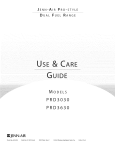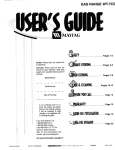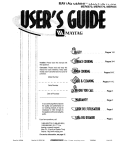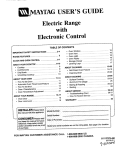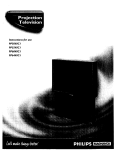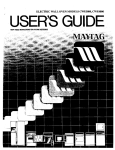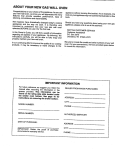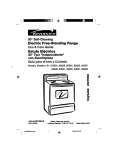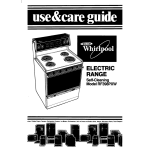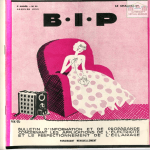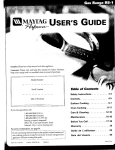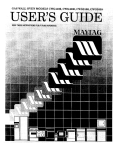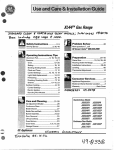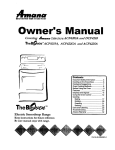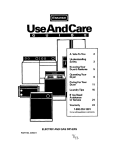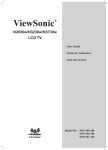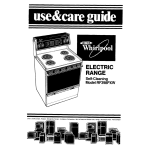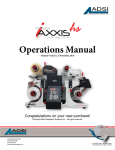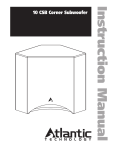Download Instructions for your gas cooking appliance
Transcript
II
IIIII
IIIIIIIIIIIII
IIIIIIIII
I
I
III
nd
Care
Instructions for your gas cooking appliance
I
I
I IIIIII
III I
I II
I
I
This BookletCovers
Electronic Controller
("T" Clock)
INSTALLER
Please leave this manual with
this range.
CONSUMER
To save you time, energy and
money, read and keep this
8112P036-60
manual for future reference.
(6/89)
iiii i i
ABOUTYOURNEW
COOKING
APPLIANCE
Congratulations on your choice of
this cooking appliance! As you use
your new appliancewe knowthat you
will appreciatethe manyfeatures that
provide excellent performance, ease
of cleaning, convenience and dependability.
New features have dramatically
changedtoday's cooking appliances
iiiiiiiiii iii
_S
iiiiiiiiiiiiiiiiiiiiii
iii
I
CONTENTS
1-4
LEVELINGLEGS ..................
4
STORAGEORAWER................
4
ELECTRONICCONTROLLER.........
5
SURFACECOOKING .............
6-7
Cooktop ......................
Burner Grates ................
Surface Burners ..............
6
6
6
Selecting Flame Size ..........
7
USING YOUR OVEN ............
Oven Characteristics ..........
Oven Vent ....................
8-11
8
8
Oven Racks ..................
Preheating ....................
How to Bake .................
How to Roast ...............
How to Broil ................
8
8
9
10
11
AUTOMATICOVEN COOKING.......
12
SELF CLEANOVEN...............
13
MAINTENANCE..................
Oven Bottom
Oven Boor
14
Light Replacement
CLEANINGCHART................
16
SERVICE .......................
17
iiiiiiii
MODELIDENTIFICATION
If you have a question, or need
service, have this information ready:
1. Complete model and serial numbers from the rating plate which is
located under the lift-up cooktop
on the right side.
2. Purchase or installation date from
__your
sales slip.
Copy this
information
in these
spaces.
Keep this
book,
your
warranty, and the sales slip together
in a handy place.
,,,,,,,,,,,,,,,,,,,,,,,,,,,
i
_
The features covered in this.
booklet are for several modeli
ranges. You may find informa-!
tion pertaining to features that_
are not on your particular range. !
I
In our continuing
effort to I
improve
the quality
of our:
products, it may be necessary to_
make changes to the products
without revising this booklet.
For example, the knob on your
range may not look like the
illustration in this book.
and the way we cook. It is therefore
very important to understand how
your new appliance operates before
you use it. On the following pages,
you will find a wealth of information
regarding
all aspects
of your
appliance. By following the instructions carefully, you will be able to
fully enjoy and properly maintain
your new appliance.
SAFETYINSTRUCTIONS..........
iiiiiiiiii
BOOKLET:
MODELNUMBER
SERIAL NUMBER
PURCHASE/INSTALLATIONOATE
SERVICECOMPANY& PHONENUMBER
,,,mll
SAFETYINSTRUC
LIONS
IMPORTANT
INSTRUCTIONS
The following instructionsare based
onsafety considerationsand mustbe
strictly followed to eliminate the
potential risks of fire, electricshock
or personal injury.
IIIIIII
FORYOURSAFETY-DO NOT STOREOR USE
GASOLINE OR OTHER
FORYOURSAFETY
FLAMMABLE
VAPORSAND
IF YOUSMELLGAS:
I.TURN ALLRANGECONTROLSOFF.
LIQUIDSIN THEVICINITY
OF THIS OR ANY OTHER
APPLIANCE.
2. EXTINGUISHANY OPEN
FLAMEOR CIGARETTE.
3. OPENWINDOWS.
INSTALLATION
Installation of the appliance must
conform with local codes or, if no
codesexist, with thecurrentNational
Fuel Gas Code. Installation and
adjustmentof the appliancemust be
performed ONLY by a qualified
installer orserviceman in accordance
with the Installation Instructions, See
accompanying Installation Instructions.
Be sure floor covering under your
range can withstand prolongedheat.
This is a heavy appliance and can
settle into soft floor coverings,such
as cushioned-vinyl.Whenmovingon
this type of floor, use care.
A range should NOT be installed
directly over kitchencarpetingunless
an insulating pad or 1/4-inch thick
piece of plywood is placed between
the range and carpet.
4.DO NOT TOUCHELECTRICALSWITCHES.
(DO
NOT TURN ANY ELECTRICALSWITCHESON
OR OFF.SPARKSMAY
IGNITETHEGAS).
5.IMMEDIATELY CALL
YOURGASSUPPLIER.
IIIIIII
IIIIIIIIIIH
Have the installer show you the
locationof the gas shutoff valve and
how to shut it off in an emergency.
Be certain all packing materials are
removed from the range before
operating, to prevent fire or smoke
damage shouldthe packing material
ignite.
Observe all instructionsfor minimum
clearances to any combustible
surfaces. These should be in
accordancewith information on the
rating plate and with national fire
laws.
iiiii iiiii
iii
i= i
I
-iN CASEOF FIRE:
1. Turn rangecontrolsand ventilating hood, if equipped, off
immediately.
2. Smother fire or flame, use dry
chemical,or a foam-type extinguisher.
= If the fire is in the oven,
smotherit by closingthe oven
door.
. If the fire is in a pan on a
surface burner,cover the pan.!
* Bakingsodais alsoeffective,iF,
available.
* Do not use water on greasei
fires.
GASTYPE
All modelsare adjustablefor usewith
NATURAL or LP (bottled) gas. An
appliance adjusted for one type of
gas CANNOTbe used with the other
type until adjustmentsare madeby a
qualified serviceman.
GASODOR
If gas odor is detected, cut off thegas
supply to the appliance. Then, call
your installerorlocal gascompanyto
have the leak checked.NEVERUSEA
MATCHOROTHERFLAMETO LOCATE
A GAS LEAK.
SERVICING
Electrical supply must be disconnectedbeforeservicingappliance.
Do not repair or replaceany part of
your range unless specifically recommendedin this manual.All other
servicing should be referred to a
qualified technician.
If range is installed near a window,
properprecautionsshouldbetakento
prevent curtains from blowing over
burners creating a FIRE HAZARD.
1
SA ETYINSTRUCTIONS
I
IIIIIIIIIIIIIII
IIIIIIIIIIIIIII
IIIIIIIIIIIIIIII
I
IIIIII
Neveruse your rangeto warm orheat
the room.
No cookingapplianceshouldever be
usedas a spaceheater. This instruction is based on safety considerations to prevent potential hazard to
the consumeras well as damage to
the appliance.
Keeparea aroundapplianceclearand
free from combustible materials,
gasoline,and otherflammablevapors
and materials.
In the event of a prolongedpower
failure, the surface burner can be
manually lighted with a match. The
oven cannot be operated during a
power failure.
CHILDSAFETY
1. Do not leave childrenaloneor
unsupervisednear the appliance whenit is in use or is still
hot.
2. Children should never be
allowed to sit or stand on any
part of the appliance.
3.Children MUST be taught that
theapplianceand utensilsin or
on it can be hot.
4. Childrenshouldbe taught that
an applianceis not a toy. They
should not be allowed to play
with controlsor otherparts of
the unit.
5. Let hot utensilscool in a safe
place, out of reach of small
children.
.
CAUTION:Donot storeitemsof
interestto childrenin cabinets
above an appliance. Children
climbing on the appliance to
reach items couldbe seriously
injured. An appliance should
not be usedas a step stool to
cabinets above.
mmmmlluiiii
II
IIIIIIIIIIIIIII Illlll
111111111111
IIIIIIIIIIII
IIIIIIIIIIIIII
I
IIIIIIIIIII
............ COOKING'AF-ETY
GENERAL
--
IIIIIIIIIIIIIII III
IIIII
I
if flame shouldgo outduring cooking,
turn burner off. IF GAS HAS
COLLECTEDAND A STRONG GAS
ODORIS DETECTED,WAfT5 MINUTES
FOR GAS ODOR TO DISAPPEAR
BEFOREREUGHTINGBURNER.
Never leave a surface cooking
operation unattended especially
when using a high heat setting. Boilovers cause smoking and greasy
spillovers may ignite.
Be sure you know which knob
controls which surface
burner.
Always make sure the correct burner
is turned on and that the burner has
ignited. When cooking is completed
turn burner off,
Do not usecooktop or oven as a
storage area for food or cooking
utensils.This instructionis basedon
safety considerations to prevent
potential hazard to user and to the
appliance.
Use caution when wearing garments
made of flammable materialto avoid
clothing fires. Loose fitting or longhanging-sleeved apparel should not
be worn while cooking.Clothing may
ignite or catch utensil handles.
Usedry, sturdy potholders.Damppot
holdersmay causeburnsfrom steam.
Dish towels or other substitutes
should never be used as pot holders
because they can trail across hot
surface burners and ignite or get
caught on range parts.
Never heat an unopenedcontaineron
the surface burner or in the oven.
Pressure build-up may cause
containerto burstresultingin serious
personal injury or damage to the
range.
Usecare whenopeningovendoor.Let_
hot air or steam escape before
removing or replacingfood. Always
place oven racks in the desired
positions while ovenis cool. If a rack
must be moved while hot, be careful
to avoid contact of pot holderswith
oven burner flame.
Slide oven rack out to add or remove
food, using dry, sturdy pot holders.
Always avoid reaching into oven to
place or remove food.
Use aluminum foil ONLY as:
instructed.Improperuseof aluminum'
foil may cause damageto the range,!
affect cookingresults adversely and
can also result in shock and/or FIRE_
HAZARDS.
Do not cover broiler insert with foil.
To minimize chance of grease fires,
use a broiler pan that allows grease
to drip below the insert, away from
the broiler flame.
GREASE
Use extreme caution when moving
the grease kettle or disposingof hot
grease.
Hot grease is flammable. Avoid
letting greasedepositscollectaround
appliance,rangehood,orventfan. Do
not leave containerof greasearound
a cooking appliance. Always let
quantities of hot fat usedfor deepfat
frying cool beforeattemptingto move
or handle, in the event of a grease
fire, DO NOT attempt to move pan.
Cover pan with a lid to extinguish
flame and turn surface burneroff. Do
not douseflame with water. Usea dry
chemical
or foam-type
fire
extinguisher,if available, or sprinkle
heavily with baking soda.
Spills or boilovers which contain
grease should be cleaned up as soon
as possible. If they are allowed to
accumulate, they could create a FIRE
HAZARD.
SAFETYINSTRUCTIONS
I
IIII1_
VENTING
SELF CLEANOVEN
COOKING
UTENSILS
Never blockoven vent or air intakes.
Do not obstructthe flow of combustion and ventilationair. Restrictionof
air flow to the burnerprevents proper
performance.
(if equipped)
ALUMINUM- Conductsheat quicklyi
and evenly. The heavier the gauge.!•
(thickness)
the more durable.
Aluminum may discolorfrom alkaline
foods and pit from acid foods.
Avoid touchingoven vent area while
oven is on and for several minutes
after oven isturnedoff. Somepartsof
the vent and surrounding area
becomehot enoughto cause burns.
CLEANING
Turn off all controls and wait for
rangeparts to coolbeforetouchingor
cleaning them. Do not touch the
burner grates or surroundingareas
until they have had sufficienttime to
cool.
Touchinga hot ovenlight bulbwith a
damp cloth could cause the bulb to
break. Should the bulb break, disconnect power to the range before
trying to remove the bulb to avoid
electrical shock.
Do not clean door gasket. The door
gasket is essential for a good seal.
Care _hould be taken not to rub,
damage,or movethe gasket. Do not
use oven cleaners of any kind in or
around any part of the self clean
oven. Clean only parts listed in this
booklet. Before self cleaning the
oven,removebroilerpan,ovenracks,
and other utensils, and wipe off
excessivespillovers.
PLASTICS
Many plastics are vulnerableto heat.
Keepplastics away from parts of the
appliancethat may becomewarm or
hot.
COPPE8 - Very good heat conductor,
but discolors easily. Used primarily
for bottom coatings and gourmet
cookware.
STAINLESS
STEEL. Alone it is a poor
conductor, develops hot spots and
produces uneven cooking results.
However,it is durable, easyto clean,
and somewhat stain resistant. Coating stainless steel with a copper or
aluminum bottom results in an easyto-clean,utensil,
durable, even
AEROSOL
SPRAYS
Many aerosol-type spray cans are
EXPLOSIVEwhenexposedto heatand
may be highlyflammable. Avoidtheir
use or storage near a hot appliance.
Clean range with caution. If a wet
spongeor cloth is usedto wipe spills
on a hot cooking area, be careful to
avoid steam burns. Some cleaners
can producenoxiousfumes if applied
to a hot surface.
cooking
CASTIRON- Slow to conductheat, but
retains the heat well. Heavyto handle
and must be kept well seasonedto
prevent sticking and rusting.
GLASS/GLASS.CERAMIC
Transfers
heat slowly and unevenly, but holds
heat well.
Only certain types of glass,_
glasslceramic,
ceramic, earthenware, or other glazed utensils are
suitable for rangetop servicewithout
breaking due to thesuddenchangein
temperature. Check and follow
manufacturer'srecommendeduse or
limitationsfor such utensils.
iiiiiiiiiiiii±
ELECTRICAL
CONNECTION
Applianceswhich require electricalpower are equipped
with a three-prong grounding plug which must be
pluggeddirectly into a properlygroundedthree-hole120
volt electrical outlet.
If an ungrounded, two-hole or other type electrical outlet
is encountered, IT IS THE PERSONALRESPONSIBILITY OF
THE APPLIANCE OWNER TO HAVE RECEPTACLE REPLACED WITH A PROPERLY GROUNDED THREE HOLE
ELECTRICAL OUTLET. The three-prong grounding plug is
provided for protection against shock hazards. DO NOT
CUT OR REMOVE THE THIRD GROUNDING PRONG FROM
THE POWER CORD PLUG.
IIIIIIIII
....
-Always disconnect power to
appliance before servicing.
...............................
3
I
,,,,,,,,,,,,,,,,,,,,,
SA ETYINS[RUCTIONS
I
III
I
lllll!rlll
I
]IIIII
I
IIIII
I
IIIIIII
I
I
I
I
LEVELING
LEGS
UTENSILSAFETY
Useonly pansthat have flat bottoms
and handles that are easily grasped
and stay cool. Avoid using unstable,
warped, easily tipped or loose
handledpans. Donot usepansif their
handles twist and cannot be
tightened.Pans that are too heavy to
movewhen filled with food may also
be hazardous.
If such storageis provided,it should
be limited to items which are used
infrequently and which are safely
stored in an area subjectedto heat
from an appliance. Temperaturesin
storage areas above the unit may be
unsafe for some items, such as
volatile liquids, cleaners or aerosol
sprays.
Always place a pan of food on a
surface burner before turning it on,
and turn it off before removing the
pan. Be sure you know which knob
controlseach surface burner.
VENTILATING
HOOD
Always turn pan handlesto the side
or back of appliance, not out into the
room where they are easily hit or
reached by small children. To
minimizeburns,ignitionof flammable
materials and spillage due to unintentional contact with the utensil,do
not extend handles over adjacent
surface burners.
Be sure utensil is large enough to
properly contain food and avoid
boilovers. Pan size is particularly
important in deep fat frying. Be sure
pan will accommodatethe volumeof
food that isto be added as well asthe
bubble action of fat. Never leave a
deepfat frying operationunattended.
Use extreme caption when moving
the greasekettle or disposingof hot
fat.
Always adjust surface burnersflame
so that it doesnot extendbeyond the
bottom of utensil.This instructionis
based on safety considerations.
STORAGE
ABOVERANGE
To eliminate the hazard of reaching
over hot surface burners, cabinet
storage should not be provided
directly above ,_ unit.
To reduce the hazard of storage
above a range, install a ventilating
hood that projects at least 5 inches
beyond the bottom edge of the
cabinets. Clean hood frequently to
preventgrease from accumulating on
hood or its filter. Should a boiloveror
spillover result in an open flame,
immediatelyturn off thehood's fan to
avoid spreading the flame. After
thoroughly extinguishing flame, the
fan may be turned on to remove
unpleasantodor or smoke.
IMPORTANT SAFETYNOTICE
AND WARNING
The California Safe Drinking Water
and Toxic Enforcement Act of 1986
(Proposition
65) requires
the
Governor of California to publish a
list of substances known to the State
of California to cause cancer or reproductive
harm, and requires
businesses to warn customers of
potential
exposures
to such
substances.
Users of this appliance are hereby
warned that the burning of gas can
result in low-level exposure to some
of the listed substances, including
benzene, formaldehyde and soot, due
primarily to the incomplete combustion of natural gas or liquid petroleum
(LP) fuels. Properly adjusted burners
will minimize incomplete combustion.
Exposure to these substances can
also be minimized
by properly
venting the burners to the outdoors.
4
Somefloors are not level. For proper
baking, your range must be level.
Leveling legs are located on each
cornerof the baseof the range.L_vel
by turning the legs.
STORAGE
DRAWER
(if equipped)
The storage drawer at the bottom of
the range is safe and convenient for
storing metal and glass cookware.
DO NOTstore plastic, paperware, or
food in this drawer.
Removedrawer to clean under range.
ELECTRONIC
CONTROLLER
[
I
II
I
I[I I
II
II
I
The following is a quick reference for operating the electronic controller. A beep sounds each time a
FUNCTION pad is pressed. At the end of an operation, three consecutive beeps will sound.
When in doubt, press the STOP/CLEAR button and start over. The STOP/CLEAR button clears
everything except the time-of-day c.fock and the TIMER.
The electronic controller is equipped with a self-diagnostic feature for service use ONLY. if a fault
code (F plus a number - F1) appears in the display along with a continuous beeping sound, press the
STOPtCLEAR button. See page 16 if the fault code reappears in the display.
II
II
ii
UUlliiii
_--
" IIIIIIIIII
szoP
II I
iiiiiiiiiu
' Ii....
-'_
ov . IT/ /
CLEAR
!'--I t---I. I--'II'--I"AK"RO'L I
TIMER
....
CLO¢
TIMER
"
SI"OP"'""
"r
CLEAN LOCK I/,i {
K
COOK
........................
C LEAN
TIME
eROIL
STOP
TIME
BAK
I
IIIIIIIIIIIII
C
IIIII
IIIIIIIIIII
•
IIIIIIIIII
II......
IIIIIIIIIIIIIIL
__1
IIIIIIIIIIIIIL I
...g
_._
=
r _
.....
.... NOTE:The fun tion pads on some models are round rather than rectangular-shaped. Although they
do not look like this illustration, they function as described in this booklet.
STOP/CLEARBUTTON
SET KNOB
Press to cancel a]t operations except
the time-of-day clock and timer,
Turn in either direction to enter time
or temperature. Knob is also used to
select HI or LO broil.
EXPLANATION
OF THEFUNCTIONPADS
TIMER IMinute Timer]
• Press TIMER pad. "Timer" lights in
the display,
COOKTIME
Used to automatically turn the oven
off at the end of cooking.See page12
for instructions.
BROIL
Used to set the oven for a LO or Hi
broil operation. See page 11.
STOPTIME
Used to delay the start of a cook or
clean operation. See page 12 for
instructions.
Used to set the oven for a baking or
roasting operation. See pages 8 to 10.
• Turn SET knob to the desired time.
BAKETEMP OR BAKE
• Timer starts automatically.
• To cancel, turn SET knob to 00:00, or
press and hold the TIMER pad.
CLOCKITime-el-Day)
-_-Press CLOCK pad. "Time" lights in
the display.
• Turn SET knob to the correct timeof-day.
CLEAN
Usedto set the ovenfor a cleancycle.
See page 13 for instructions.
"door" will flash in the display if the
door latch is NOT in the lock position.
• To lock in time-of-day,
press
STOP/CLEAR button until "Timer"
-light disappears in the display.
When power is first supplied to the
range, or if there is a power failure,
the display wilt blink. Follow above
instructions to set clock.
5
TO CANCELBAKETEMP OR BROIL
Press STOP/CLEAR button. Time-ofday reappears in the display.
SURFACE
COOKING
COOKTOP
SURFACE
BURNERS
LIGHTINGSURFACE
To remove cooktop: When cool, first
remove grates and drip bowls, if
equipped. Grasp two front burner
wells and lift up.
All surface burners are secured in
place during transportation
with
either a shipping screw or a spring
clip. Once the range is installed, these
must be removed to allow quick and
easy removal of the burner.
BURNERS
The top can be completely removed
of, if equipped with a metal support
rod, can rest on the rod. Support rod
is located across the front of the
burner box.
I
To remove the one piece uniburner:
IIIIII
t
Your range is equipped with pilotless
ignition which eliminates the constant standing pilot.
To light burneri
1. Place utensil on burner grate.
2. Push in and turn knob to the LITE
position. A clicking sound will be
heard and the burner will light.
After the burner lights, turn knob to
the desired flame size.
IIIIIIIIIIIIIIIII
I
.,
!
iiiiiii1[[[
BURNERGRATES
Your range will be equipped with
either round or square grates.
Allow burner to cool. Lift cooktop. To
remove uniburner, lift up slightly and
pull out. Under no circumstances are
burners to be taken apart for
cleaning.
To remove standard single burner:
......
IIIIli
CAUTION:Burner grates must be
properly positionedbefore cooking.
IIIIII
i
If flame should go out during a_
cooking operation, turn the burner
off. IF GAS HAS ACCUMULATED AND
A STRONG GAS ODOR IS DETECTED,
WAIT 5 MINUTES FOR THE GAS ODOR
TO DISAPPEAR BEFORE RELIGHTING
BURNER.
OPERATING RANGE DURING A POWER
FAILURE
-T-Hold a lighted match to the desired
surface burner head.
2. Turn knob to LfTE. The burner will
When reinstalling round grates, place
)ins in slots so grates stay in place.
then light.
3. Adjust the flame to the desired
level.
When reinstalling
square grates,
place indented sides together so
straight sides are at front and rear.
IIIIIIIIII
III
IIIIIII
IIII
iiiiiiiiiiiiiii
Remove or support cooktop. Grasp
burner head and tilt to release tab
from slot near igniter. Lift up and
toward back of cooktop until air
shutter end of burner releases from
valve.
CAUTION: When lighting surface
burners, besure all controlsare in the
OFF position. STRIKEMATCH FIRST
and hold in position before turning
knob on.
SURFACE
COOKING
......................................
__
IIII
IIIIIIIIIIIIII
IIIIIIIIIIIII
I1[
IIIIII
IIIIIII
II
IIIIII •
SELECTINGFLAMESIZE
If a knob is turned very quickly from
HIGH to WARM setting, the flame may
go out, particularly if burner is cold. If
this occurs, turn the knob to the OFF
position. Wait several seconds, then
light again,
IIIII
i
iii
iiiiiiiii
ii
Flame should be adjusted so it does
not extend beyond the edge of
cooking utensil. This is for personal
safety and to prevent damage to
cabinets above cooktop.
Use HIGHto quickly bring foods to a
boil or to begin a cooking operation.
Reduce.to a Power setting a continue
cooking. Never leave food unattended
when using a HIGH flame setting.
Use SIMMER (medium) to continue a
cooking operation. Food will not cook
any faster when a higher flame
setting
is used than needed to
maintain a gentle boil.
IIIIIIIIIIII
II
7
I
IIIIIIIII
Use WARM (low) to simmer or keep
foods at serving temperatures. Some
cooking may take place if the utensil
is covered.
i
iiiiiiiii
IILI
iiiiiiiiiiiiiii
,,,,ll
To obtain a lower flame size, turn
knob back toward the OFF position
until the desired flame size is
reached.The lowest flame setting is
located adjacent to theOFFposition.
This is not a preset position.
USINGYOUROVEN
.................
OVENCHARACTERISTICS
Every oven has its own characteristics. You may find that the cooking
times and temperatures you were
accustomed to with your previous
range may needto bealtered slightly
with your new range. Please expect
somedifferenceswiththis newrange.
OVENCANNOTBE
USEDDURINGA
POWERFAILURE
To replace: Place rack on rack
supports, tilt up and push toward rear
of oven. Pull rack out to "lock-stop"
position to be sure rack is correctly
replaced.
iiiiiiiiiiiiiii
!
nAcK
OVENVENT
i
I
2
The electroniccontrol automatically
keeps the oven at the desired
temperature by cycling the over)
burner on and off. After the oven
temperaturehas been set, there will
be about a 45 seconddelay beforethe
burner ignites.Thisis normal,and no
gas escapes duringthis delay.
PREHEATING
RACK POSITIONS:
NEVER place pans directly on the
oven bottom.Do notcoverentirerack
with aluminum foil or place foil
directly under utensil. To catch
spillovers,cut a piece of foil a little
larger thanthe pan and placeit onthe
rack below the rack containingthe
utensil.
IMPORTANT
i
Your ovenis ventedthrougha ductat
the base of the backguard. Do not
block this opening. It is important
that the flow of hot air from the oven
and fresh air to the oven burner be
unrestricted. Do not touch the vent
openings or nearby surfaces during
oven operation as they may be hot.
The two ovenracksaredesignedwith
a "lock-stop" position to keep racks
from accidentallycomingcompletely
Out of the oven.
IIIIIIIIIIIIIIIIII
To remove:Be sure rack is cool. PuJI
rack out to the "lock-stop" position.
Tilt up and continuepulling untilrack
releases.
_RACK
OVENRACKS
IIIIIIIIII
RACKI (top of oven) used for broiling
thin foods.
RACK2 usedfor one-rack baking or
broiling thicker cuts of meat.
RACK3 usedfor mostone-rackbaking
and for roasting some meats.
RACK4 used for roasting large meats,
cooking larger foods and for baking
angel food cake or pie shells.
HINTS:
If cooking on two racks, stagger pans
so one is not directly over the other.
Use rack positions 1 and 3, 2 and 4, or
1 and 4, depending on baking results,
when cooking on two racks.
Placefood in theovenonthecenterof
the rack. Allow 1 or2 inchesbetween
edgeof utensiland the ovensides or
adjacent utensils:
Preheating is necessary only for
baking,tt is not necessary to preheat
for broilingor roasting.Allow ovento
heat for about 10 minutes before
placingfood in the oven.
Selectinga temperature higher than
desiredwill NOTpreheattheoven any
faster. Preheating at a higher
temperature may have a negative
effect on baking results.
To preheat:Set oven for baking and
allow the oven to heat until display
shows the preset temperature (100
will appear in the display until the
oven reaches IO0°F. The display will
then showthe oventemperaturein 5°
incrementsuntilthe ovenreachesthe
preset temperature).
Once the preset temperature is
reached, and the oven temperature
has stabilized, a single beep will
sound.
if the oventemperature is changed
after preheating, a beep will signal
that the oven has reachedthe new
temperaturesetting.
USINGYOUROVEN
HOWTO BAKE
3. Place food in center of oven,
allowing a minimum of 2 inches
between utensil and oven walls.
1. When cool, position rack in oven
dependingon what you are baking.
2.!To set oven: Press BAKE TEMP pad.
ll=
J_
Bake lights in the display.
4.Check food for doneness at
minimum time in recipe. Cook
longer if necessary.Remove food
from the oven.
Turn SETknob to thedesiredoven
temperature. "ON" lights in the
display. The oven immediately
turns on and beginsto heat. The
display will register the oven
temperature starting at 100°F.
Press STOP/CLEARbuttonto cancela i
baking operation.
If you have carefully f0JJowed"
th_
basic instructions and still experience poor results,these suggestions
may be helpful:
ANDWHYTHEYHAPPEN
COMMONBAKINGPROBLEMS
...............................
PROBLEM
Cakes are uneven.
",1
,,,,,,,,i
•,
,,,
,, ,,,,,
,
,,,,,,,
Excessive shrinkage.
Too little leavening.
0vermixing.
Pan too large.
Oventemperaturetoo high.
Baking time too long.
Pans too close to each other
or oven walls.
Crumbly or dry texture.
Improper measurement of sugar,
baking powder, liquid or fat.
01d baking powder.
Oventemperaturetoo high.
Baking time too long.
Uneven
texture.
Too much liquid.
Undermixing.
Oventemperaturetoo low.
Bakingtime too short.
Cakes ha ve tunnels.
Not enoughshortening.
Too much baking powder.
0vermixing.
Oven temperaturetoo high.
Ovennot preheated.
Pansdarkened,dented or warped. Cakes crack on top.
,,,,,
Cakesdon't brown on top,
ii
iiiiiiiiiii
iii
ii
Oventemperaturetoo low.
Overmixing.
Too muchliquid.
Incorrectpan size or too little
batter in pan.
Oven door openedtoo often.
i
Cakes,cookies, bTscuits too
brown on bottom.
iiiiiiii
Pans touching each otheror
oven walls.
Batter uneven in pans.
Oven temperature too low or
baking time too short.
Rangenot level.
Undermixing.
Toomuch liquid.
i
,
i
CAUSE
Too much shortening or sugar.
Too muchor too little liquid.
Temperaturetoo low.
Old or too little baking powder.
Pan too small.
Ovendoor opened frequently.
Cakes don'tbrown evenly
on bottom.
,,,,,,,,,
CAUSE
Temperaturetoo high.
Baking time too long.
Overmixing.
Too much flour.
Pans touching each other or
oven walls.
Cake high in middle.
...........
PROBLEM
IIIIIIIII
|1
IIII
!
Cake not done in middle.
Batter overmixed.
,,
Oven temperaturetoo high.
Too much leavening.
Temperaturetoo high.
Pantoo small.
=
Pie crust edges too brown.
Oventemperaturetoo high.
Panstouching eachother
or oven walls.
Edges of crust too thin.
Pies don'tbrown on bottom.
Using shiny metal pans.
Pieshave soaked crust.
Temperaturetoo low at start
of baking.
Filling too juicy.
Usingshiny metal pans.
II
Oven not preheated.
Pans touchingeach other or
oven walls.
Using glass, darkened, warped
or dull finish metal pans.
incorrectrack position,
Incorrect use of aluminum foil.
Placed 2 cookie sheets on one
rack.
i
9
,,,i
,,,,,,,,,, •
,,,,,,,,,, m,
USINGYOUROVEN
li
i
II
Illlllll
Ill
IIIIIIIIIII
•
I
Ill
IIIII I
IIII
IIIIIIIIIIIIIII
IIIIIIIIIIIII
III
II
IIIIIIIII
HOWTO ROAST
Frozen meat may be cooked in the
same way as fresh meatif the meatis
thawed first. It is also possible,
however, to cook meat fromthe
frozen state. Follow the same
roasting instructions but increase
cookingtime approximately 10 to 25
minutes per pound. When using
frozen packaged meat, follow
package directions. Frozen poultry
should always be thawed before
cooking except when package
directions recommendcooking from
the frozen state such as for frozen
turkey rolls. DO NOT REFREF.ZE
MEATS THAT HAVE NOT BEEN
COOKEDFIRST.
Cooking time is determined by theweight of the meat and the desired
doneness.Use the chart given below
as a guide in determining cooking
times. For the most accurateresults,
use a meat thermometer.Insert the
thermometerso the tipis in the center
of the thickestpart of the meatand is
not touching bone or fat.
To setovenfor roastingseepage9,
#2.
Roastingis thecookingof tendercuts
of meat with dry heat. No water is
added nor is the cooking utensil
covered. Searing is unnecessary.If
desired, season meat with salt and
pepper.
Checkweight of meatand place meat
fat-side-up on a rack in a shallow
roasting pan.
Place oven rack in one of the two
bottom rack positionsbefore oven is
turnedon. Preheating is unnecessary
for roasting meats.
After cooking,removemeat from the
oven and let stand 15 to 20 minutes
for easier carving. Rare or medium
rare meats should be removedfrom
the oven when the internaltemperature is 5 to 10° less than the final
desired temperature since meat will
continue to cook slightly while
standing.
Most meats are roasted at 325°F
except tenderloin at 425°F and
smaller poultry at 375°F to 400°F.
PORK
Pork should always be cookedto an
internal temperature of 170" (well
done) throughout.
ROASTING
CHAR1;
APPROXIMATE
WEIGHT
......
CUT OF MEAT
BEEF
Standing Rib
TEMP.
INTERNALTEMP.
IIIIIIIIIIIIIll
6 to 8 lbs.
...........
4 to6 i s.
Rolled Rib
iiiii
300-325°F
23 to 25 min/tb.
27 to 30 mintib.
32 to 35 mintlb.
300-325°F
26 to 32 mintlb.
34 to 38 minllb.
40 to 42 minllb.
140°F (rare)
160°F (medium)
170°F (well done)
300-325°F
140°F (rare)
160°F (medium)
170°F (well done)
350°F
4 to 6 Ibs.
140°F (rare)
425°F
2 to 3 Ibs.
140°F (rare)
425°F
5 to 7 Ibs.
32 minilb.
38 mintlb.
48 minllb.
18 to 20 minllb.
20 to 22 minllb.
22 to 24 rain/lb.
=1
4 to 6 Ibs.
Rib EYe
140°F (rare)
160°F (medium)
170°F ,(,we!l done) .....
140°F (rare)
160°F (medium)
170°F (well done)
TIME
II
I
Tenderloin,Whole
=
iiiii
ii
• ill
iiiiii
iiiiiiiiii
3 to 4 Ibs.
6 to 8 Ibs.
140 170°F
140- 170°F
RolledRump
(high quality)
PORKLOIN
Center
Half
4 to 6 Ibs.
150- 170°F
LAMB, LEG
5 to 9 lbs.
Sirloin Tip
(high quality)
....................
,,,,m
I
,,,,,,,
325_50_
m
F
i
mmmI
.......
U
325-350°F
II
IIIIII1[[
40 to 60 minutes
(total time)
45 to 50 minutes
(total time)
"35 to 40 mintlb. .........
30 to 35 rain/lb.
)11
25 to 30 minllb.
IIIIIIII
3 to 5 ]bs.
5 to 7 Ibs.
170°F Throughout
170°F Throughout
325°F
30 to 35 rain/lb.
35 to 40 rain/lb.
160°F (medium)
170 - 180°F (well)
325°F
25 to 30 min/Ib.
30 to 35 minlib.
,,,,,,,,
USINGYOUROVEN
...................
]
HOW TO BROIL
iiiiiiiiiiiii
/illliHii
iii
I
IIII
/illli
IIIIIIIIIII
I
TO BROIL
1. Prepare meat by removingexcess
fat and slashing remaining fat,
being careful not to cut into meat.
This will help keep meat from
curling.
=..
Broilingis a methodof cookingtender
foods by direct heat underthe burner.
Thedegreeof donenessis determined
by thedistancebetweenthe meatand
the burner,and the length of broiling
time.
2,
Broilingrequires theuseof thebroiler
pan and insert.Thecorrectpositionof
the insert in the pan is very
important. The broiling insert should
be placedin the panso thegreasewill
drain freely. Improperusemay cause
grease fires.
Thebroilerinsert CANNOTbecovered
with aluminumfoil as this prevents
fat from draining into pan below.
However, for easier cleaning, the
broiler pan can be linedwith foil. Do
not usedisposablebroilerpans.They
do not provide a separate tray.
TYPE OF FOOD
I
II
to
TEMP.
HI
IIIIIIIIIIIL
IIIlllll[
]
HI
H!
HI
i,,
i ........
Z
DONENESS
IHI_
iiiiiiiiiiL
i111111
=
TOTALTIME
,,,,,,,,,,,,,,,,,
2
Crisp
iiiiII
HAMBURGER PATTIES
3/4-inch
IIIIIIIII
BROIL
isselected.
IIIIIIIIIIIIIL
RACK
POSITION*
,,,,,,,,,,
BACON, Thick slice
'
IIIII
Use HI BROIL for most broil
operations. When broiling longer
cooking foods such as pork chops,
poultry or thick steaks, select LO
BROIL. Low temperature broiling
allows food to cook to the well done
stage without excessive browning.
Cooking time may increase if LO
5. Checkdonenessby cuttinga slit in
meat near centerfor desiredcolor.
III
IIIIII
* "ON" lights in the display.The oven
immediately turns on and beginsto
heat.
4. Follow suggestedtimeson broiling
chart. Meat should be turnedonce
about half way through cooking.
IIIIIII
IIIIIIII
Turn SET knob clockwise one or
two clicks to select HI for normal
broiling or LO for special low
temperature broiling.
BROILINGCHAR1
..........
i
• ' Press BROILpad. "Broil" lights in
the display.
3. Broilingshould be donewith oven
doorclosed.Donot lockovendoor.
STOP/CLEAR button
a broil operation.
IIIIIIIIIII
To set even:
Placebroilerpan on any of the recommended rack positions. Generally, for brownexterior and rare
interior, the meat should be close
to the burner.Placefurther downif
you want meat well done.
6. Press
,'"qcel
IIIII
NOTE! Below are recommended rack
positions. Remember, the closer to
the flame, the quicker the food cooks.
You can choosepositionaccording to
the desired doneness.
2
2
2
lillliUili
4 to 6 rain.
I
ii
140°F Rare
160°F Medium
170°F Well
IllllI
!0 to 12 rain.:,
12 to 15 min.,i
15 to 18 min.
1
mmmmmHi
STEAKS
1-inch
11/2-inch
CHICKENBREASTHALVES
_mm
HI
HI
HI
2
2
2
140°F Rare
160°F Medium
170°F Welt
8 to 10 min.i
12 to 14 min. i
18 to 20 rain.
HI
HI
HI
2
2
2
140°F Rare
160°F Medium
170°F Well
14 to 16 mm.!
18 to 20 min._
25 to 30 rain.
LO
3
I85°F Welt
30 to 40 min_!
IIIIIIIIIIII
I
FISH FILLETS,fresh or thawed
HAM SLICE, Precooked
1/2-inch
HI
2
Flaky
10 to 15 rain.
HI
2
140OF
8 to 12 rain.
I
PORKCHOPS
I/z-inch
Ht
170°F Wetl
,,,r,
Top rack position is #1.
...........................................
11
15 to 20 min.:
AUTOMATIC
OVENCOOKING
•
I
I
II IIIIIIIIIIII
IIIIIII
III IIIIIIIII
Automatic cooking feature is used to turn the oven on and off at a preset time-of-day. This feature
can be used to delay the start of a cooking operation or a self-clean cycle.
The automat{c cooking feature witl not operate unless the range clock is functioning and is set at the
correct time-of-day.
IMPOETANT: Highly perishable foods such as dairy products, pork, poultry, seafoods or stuffing are
not recommended for delayed cooking. If cooking more than one food, select foods that cook for the
same length of time and at the same oven temperature.
TO BAKEBY TIME
TO BAKEBY TIME
(wi_th immediatestart)
1. Press COOK TIME pad. "Oven" and
"Time" light in the display.
I
...
T,=
-/"
7/--/35
1..__ILI,,_
°1
(with delayed start)
1. Press COOK TIME pad. "Oven" and
"Time" light in the display.
2. Enter cooking time with SET knob.
3. Press STOP TIME pad. "Stop Time"
lights in the display.
uI
........
_,=
L "_ILl
2. Enter cooking time (how iong you _
wish food to cook) with the SET
knob.
3. Press BAKE TEMP pad. "Bake"
lights in the display. Enter oven
temperature with the SET knob.
4. _"ON"lights in the display. The oven
automatically turns on and begins
to heat. The display begins to
count down.
4. Enter the time you wish the oven to
turn off by turning the SET knob.
"Delay Oven" lights in the display.
5. Press BAKE TEMP pad. "Bake"
lights in the display.
i
EXAMPLE
1. Press COOK TIME pad.
2. Turn SET knob until 1:30 (1
hour, 30 minutes) appears in
the display.
3. Press BAKE TEMP pad.
4. Turn SET knob until 350°F
appears in the display.
Oven turns on immediately.
illlllllllll
I
ii
,,,
illllllllll
food to be cooked by 6:00.
I
-
1
1. Press COOK TIME pad.
2. Turn SET knob until 2:30 (2
hours, 30 minutes) appears in i
the display.
I
3. Press STOP TIME pad.
l
4. Turn SET knob until 6:00 i
appears in the display.
I
5. Press BAKE TEMP pad.
l
6. Turn SET knob until 350°F
appears in the display.
The oven will turn on at 3:30, cook;
the food for 2Y2 hours and will,
automatically turn off at 6:00.
AODITIONALINFORMATION
1. The Electronic Controller will con-
At the end of the preset cooking time,
the oven automatically turns off.
Food is to cook for one hour and
30 minutes at 350°F,
EXAMPLE
t
Food is to cook for 2 hours and 30l
minutes at 350°F. You wish the/
6. Enter oven temperature
SET knob.
with the
1The oven will automatically turn on in
time to have the food ready by the
preselected STOP TIME.
,,,,,,,
12
tinuously
beep if you delay in
entering a complete program. If
you hear the beeps, just continue
entering the program as described
above. The beeps will stop.
2. To reset or cancel the program:
Press the STOP/CLEAR button.
3. After
setting
the Automatic
Cooking feature, press the CLOCK
pad and the time-of-day
will
reappear in the display. "Delay
Oven" and the preset oven temperature wilt remain in the display
as a reminder that the oven is set
for a delayed cooking operation.
SELFCLEANOVEN
• •
II
•
IIIIII
I
III IIIIII IIIIIII
I Ill
IIIIII I
IIII
I
I
I
I
IIIIIIIII
The setf clean oven uses temperatures above normal cooking temperatures to automatically clean
the entire oven. The separate clean cycle eliminates soil completely or reduces it to a gray ash which
is easily wiped up with a damp cloth when the oven is cool.
PREPARE
OVENFOR
SELFCLEANING
Remove all pans from the oven. The
racks may be left in, but will discolor
and may not slide easily after
cleaning.
Clean oven frame, door frame and
around the oven vent with a nonabrasive cleaningagent suchas Bon
Ami. These areas are not exposedto
cleaning temperaturesand should be
cleaned to preventsoil from baking
on during the clean cycle.
Wipe up excessgrease or spillovers
from the oven bottom to prevent
excessivesmoking during the clean
cycle.
DO NOT USE OVEN CLEANERS OR
OVEN LINER PROTECTIVE COATINGS
OF ANY KIND ON THE SELF-CLEAN
OVEN FINISH OR AROUND ANY PART
OF THE OVEN.
To prevent damage, do not clean or
rub the gasket around the front oven
frame. The gasket is designed to seal
in heat during the clean cycle.
TO OPERATE
SELFCLEANCYCLE
1. Close door. Move dooriatch-t6-t_e
right until it rests in the tock
position.
2. Press CLEAN pad. if the door is not
locked as described, "door" will
flash in the display.
IIII
!
_"
iiiiiiiiii
i
IIIIIIIIIIIII
IIIIII
_.l__tLl
II
I
!
When the CLEAN pad is pressed, the
oven will automatically
clean for 3
hours. A shorter (2 hours) or longer (4
hours) clean cycle can be selected by
turning the SET knob.
To prevent accidently changing the
clean cycle, press CLOCK pad to
return display to time-of-day.
DURINGSELFCLEAN
CYCLE
The own aut-ornatically
begins to
heat up when the CLEAN pad is
pressed and the door is locked. As the
oven reaches cleaning temperatures,
the LOCK light will turn on. At this
point, the oven door can not be
manually opened. A blower sound
can be heard during the clean cycle.
The first few times the oven is
cleaned, some smoke and odor may
be detected. This is normal and will
reduce or disappear with use. If the
oven is heavily soiled, or if the broiler
pan is left in the oven, smoke and
odor may occur.
J .......
.......
I
iii
i
As the oven heats and cools, you may
hear sounds of metal parts expanding
and contracting. This is normal and
will not damage your range.
TO CANCELCLEAN CYCLE:
.
Push STOP/CLEAR button, lftheLOCK
light has notturned on, the ovendoor
can be opened.
If the LOCKlight has turnedon, allow
the oven to cool (up to 1 hour).Once
LOCKlight turnsoff, ovendoor can be
opened.
AFTERSELFCLEAN
CYCLE
--
,
41
About one hour after the clean cycl_eii
is completed, the internal !ock wili l
disengage and the door latch can be '_i
returned to its original (unlocked)I!
position: The LOCK light will turn off
when the door latch is moved to the
left.
Some soil may leave a light gray,
powdery ash which can be removed
with a damp cloth. If stain remains, it
indicates that the clean cycle was not
long enough. The stain will be
removed during the next clean cycle.
If the oven racks do not slide
smoothly after a clean cycle, wipe
racks and embossed rack supports
with a small amount of vegetable oil
to restore ease of movement.
Fine, hair-like lines may appear in the
oven interior or oven door. This is a
normal
condition resulting
from
heating and cooling of the porcelain
finish. These lines do not affect the
)erformance of the oven.
J
IIIIII1_
II
IIIIIIIII
I
TO DELAYtHE S-EL-F
CLEANCYCI_E:
1. Lock the oven door.
2. Press STOP TIME pad. _3. Turn SET knob until the time
you wish the oven to turn off
appears in the display.
4. Press CLEAN PAD.
m
13
i
MAINTENANCE
IIIIIIIII
IIII
Illl i
........................................
OVENBOTTOM
CAUTION:
To remove: When coot, remove the
oven racks. Slide the two catches,
located at each rear corner of the
oven bottom, toward the front of the
Hinge arms are spring mounted and
wilt slam shut against the range if
accidently hit. Never place hand or
fingers between the hinges and the front
oven frame. You could be injured Jf
hinge snaps back.
oven.
Lift the rear edge of the oven bottom
slightly, then slide it back until the
holes in the front edge of the oven
bottom clear the pins in the oven front
frame. Remove oven bottom from
oven.
To replace door: Grasp door at each
side, align slots in the door with the
hinge arms and slide door down onto
the hinge arms until completely
seated on hinges.
To replace: Fit holes onto pins, lower
rear of oven bottom and slide the
catches back to lock oven bottom into
place.
Do not attemptto open or close door
until door is completely seated on
hinge arms. Never turn on oven
unless door is properly in place.
m=
•
To replace fluorescent surface ught:Grasp the top trim of backguard with
thumbs under front edge and .pull
outward while lifting to release trim
from catches at each end.
Remove bulb and replacewith an 18
watt fluorescent tube. Snap top trim
back into place and restore power.
i
LIGHTREPLACEMENT
Before replacing light bulb, DISCONNECT POWER TO RANGE. Be sure
bulb is cool. Do not touch a hot bulb
with a damp cloth as the bulb may
break.
mmll
i
,.
OVENDOOR
To removelift-off door:Open door to the
"stop"
position (opened about 4
inches) and grasp door with both
hands at each side. Do not use door
handle to lift door. Lift up evenly until
door clears the hinge arms.
...........
iiiiiiiiiiii
To replaceincandescent
surfacelight: Remove clock knob, two screws and
two retainer strips. Carefully remove
glass panel and light bulbs. Replace
with a 15 watt incandescent light
bulb. Replace parts and restore power
to appliance.
iii
14
To replaceovenlight:Self Clean oven i
models only. Remove 4 screws and!
plates as illustrated below. Usecare
when removinggasket, it may tear.
Replace with a 40 watt appliance
bulb. (Not covered by warranty). Reconnect power to range and reset
clock.
i
iiiiii
]
ii]1_]
ii iiii
ii
iiiiii
CLEANING
CHART
z
..............................
IIIIIIIIIIII mllllllllllllllll
_1111111111mllllllllllllllll
I
IIIIIIIIIII
....
NN
II
IIII
IIIIII
•
I
PARTS
CLEANING
AGENTs
'.............................
Broiler insert & pan
Soap & water
Plastic scouringpad
Soap filled scouring pad
Reozovefrom broiler after use,Allow to cool, then pour offgrease. Placesoapy cloth over
tray and pan, let soak to loosensoil. Wash in soapy water. Use soap filled scouringpad
to remove stubbornsoil. Clean in dishwasher if .desired.
Burnerbox
Soap & water
Appliancewax
Burnerbox, located undercooktop,shouldbe cleanedfrequentlyto removespilloveTs.If
soil is not removedand is allowed to accumulate,it may damage the finish. To clean,
remove surface burners and clean with soap and water, rinse and dry. If desired, an
applicationof wax can be used.
Controlknobs
Mild detergent& water
To removeknobsfor cleaning,gently pull forward. Washin mild detergentand water. Do
not use abrasive cleaningagents. They will scratchfinish and removemarkings. Rinse,
dry and replace. Turn each burner ON to see if knobs have been replacedcorrectly.
Backguard- glass
oven window
Soap & water
Pasteof baking soda
& water
Windowcleaning fluid
or ammonia
Wash with cloth wrung out in soapy water. Removestubbornsoil with paste of baking i
soda and water. To avoid inside staining of oven door glass, do not oversaturatecloth,
Do not use abrasive materials such as scouring pads, steel wool or powderedCleaning
agents. They wilt damageglass. Rinse with clean water and dry.
Drip bowls, chrome
Soap & water
Paste of baking soda
& water
Plastic sc,ouring pad
Clean bowls after each use with soap and water,
o
b r stains with baking
soda paste and plasticscouringpad. To preventscratchingthe finish, do not useabrasive
cleaningagents.Rinse,dr/and replace.NOTE:Ringscan permanentlydiscolorif exposed
to excessiveheat or if soil is allowed to bake on.
Soap & water
Wash with soap and warm water. Oo not use abrasive cleaningmaterials. They will
scratch finish. Never use oven cleaners.
Grates
Detergent& water
Soap filled scouringpad
Gratesare made of porcelaincoatedsteel. Theycan becleanedat the sink with detergent
and water or in the dishwasher.Clean stubbornsoil with soap filled scouring pad.
Metal finishesAluminum - backguard
& control panel
Chrome& stainless
steel - trim parts
Soap & water
Paste of baking soda
& water
Wash with soap and water, Removestubbornsoil with paste of baking Sodaand water*Do not use abrasive or caustic agents. They will damage the finish.
Ovenracks
Soap & water
Cleansingpowders &
plastic pads
Soap filled scouringpad
Clean with soapy water. Removestubbornsoil with cleansing powderor soap iiiled
scouring pad. Rinseand dry.
;Exterior porcelain finish
Mild soap & water
Paste of baking soda
& water
lllllll_
IIIIIII
End panels, polyester
IIII
.............
iiiiiiilllllll
iii
ii
iiiiiiii
ii
iiiiiii
iiii
i
,,,,,,,
.2
ill
'""
,, ,,,,,
..........
---
ii
lllll i
j,,,
_
,,,,,
•
"
,,,,,,
"
'"'"
,,,,
•
,,
iii1,1
,
iH
i
ill
Re'.,
v;stu'b
o................
iiiiii
HHI
llll
ml
iii
HHHHI
...................
............................
................
i
.............................
mmm,ii
,...........
. ........................................
,,,,,,,
.
,,,,,,,.
Porcelain enamel is glass fused on metal. It may crack or chip with misuse.Clean with
soap and water when parts are cool. All spilfovers,especiallyacid spillovers,shouldbe
wiped up immediatelywith a dry cloth. When surface is cool, clean with warm soapy
water. NEVERWIPEOFFA WARMOR HOTENAMELSURFACEWITHA OAMPCLOTH.THIS
MAY CAUSECRACKINGAND CHIPPING.Never use abrasive or caustic cleaning agents
on exterior finish of range.
.......
ii
Interior porcelainfinish
(See page 13 for self
clean oven instructions)
i
iii
ii
i
iiii1,1
HHHHI
m
HHH
,,
Follow self cleaninginstructionson page 13. DONOTUSEOVENCLEANERS.Do not c!ean
braided gasket around oven frame.
Surface burners
Soap & water
Paste of baking soda
& water
Plastic scouring pad
such as Tufty®
Clean as necessary with warm soapy waterl Remove stubborn soii by scouring with
non-abrasiveplasticscouringpadanda paste of bakingsoda andwater. Clean portswith
a straight pin, Do not enlargeOrdistort the ports.Do not use a woodentoothpick,it may
break off and clogport. DONOTCLEANBURNERSWITHTHE FOLLOWING
causticcleaners:
steel wool, abrasivecleaningagents, dishwasherdetergent,or metal polishes.These will
damage finish. Do not clean burnersin dishwasher. Burnerscan be driedin the oven set
at 140°F. CAUTION:Burnerand burner tube must be dry before use,
Vinyl finishes "
Door handles
Manifold panel
Soap & water
Never use abrasive or caustic agents on vinyl finishes..
i
llll
i
ill
,,,,
.
,,,,,
,
,,,
.......................
...........
i1[
15
iiiiiii
iiiii
i
iii
iiiiiiui
iiiiii
iii _
ii
,,,
SERVICE
Jill
Jill
i
IIIIIIIIliiillli
Jill
II
illlli
E
Illll
Z IIIIIIIIIIII
IIII
i
IIIIIlillli
IIIIIIIIii
I
illlli
ill
illiLI]JJ[_
BEFORE
CHECKTHEFOLLOWING:
CALLING
A SERVICE
TECHNICIAN,
PROBLEM
CAUSE
CORRECTION
IIIII
1. Surface burnerfails to light
IIIIIIIIIIIIlil
IIIIIU
li
IIIIIIII
a. power supply not connected
(Pilotlessignition)
b. clogged burner port(s)
IIIII
2. Burner flame uneven
mmmmmmm •
J
IIIIII
II
iiii
IIIIIIIIII
a. connectpower, check circuit
breaker or fuse box
b. clean ports with straight pin
P
m
a. clogged burner port(s)
b. burner not properly positioned
a. clean ports with straight pin
b. see page 6 to correctly replace
burner
,,,,,,,,,,,,,,,
3. Surface burner flame
* lifts off port
* yellow in color
IIIII
......................................................
a. air/gas mixture not proper
a. call servicemanto adjust burner
primary air
4. Oven burner fails to light
a. power supply not connected
(Pilotlessign!tion)
b. electronicclock incorrectly set
a. connectpower, check circuit
breaker or fuse box
b. see page 5
5: Oven temperatureinaccurate
* food takes too long or cooks
too fast
. pale browning
* food over-doneon outside and
under-donein center
* over browning
a.
b.
c.
d.
e.
a. preheat oven 10 minutes
b. see page 8
c. see page 9
d. replace oven bottom correctly
e. reinsert sensingdevice securely
into clip(s)
6. Clock andlor light does not work
a. power supply not connected
,
,,,,,,,,,,
,, ,,
,,,,,,,,,,
oven not preheated
incorrect rack position
incorrectuse of foil
oven bottom incorrectly replaced
oven thermostat sensingdevice
out of holdingclip(s)
b. burned out light bulb
c. defective switch, starter or ballast
d. defective clock or loose wiring
a. connect power supply, check
circuit breaker or fuse box
b. replace light bulb
c. call servicemanto check
d. call servicemanto check
,,,,,,,,,,,,,,,
7. ;Fplus a numberappearsin the display. (Example F 1) Continuous
:beepssound.
,
,,,,,,,,,,,,,,,,,
Theseare called FAULTCODES.If a fault code appears in the display and a €o_om-tinuous beep sounds, press the STOP/CLEARbutton. If the fault code reappears,
disconnectpower to the range and call the service agency.
.............................................................
mmmmm, |l
mmmll
SERVICE
.J.
Do not attempt to service the
appliance yourself unless directed to
do so in this book. Contact the dealer
who sold you the appliance for
service.
HOWTOOBTAINSERVICE
When your range requires service or
replacement
parts, contact your
Dealer or Authorized Service Agency.
Consult the Yellow
Pages in your
telephone directory under ranges for
the service source nearest you. Be
sure to include your name, address,
and phone number, along with the
model and serial numbers of the
appliance.
(See inside cover for
location of your model and serial
numbers).
tf you are not satisfied with the local
response to your service requirements, call or write MAYCOR Parts
and Service Co., P. 0. Box 2370,
Cleveland, TN 37311, (615) 472-3333.
Include or have available the complete model and serial numbers of the
appliance, the name and address of
the dealer from whom you purchased
the appliance, the date of purchase
and details concerning your problem.
If you did not receive satisfactory
service through your service agency
or Maycor you may contact the Major
Appliance Consumer Action Panel by
letter including your name, address,
and telephone number, as well as the
model and serial numbers of the
appliance.
16
Major Appliance ConsumerAction Panel
20 North Wacker Drive
Chicago, tL 60606
[
MACAP (Major Appliance Consumer
Action
Panel) is an independent
agency sponsored by three trade
associations as a court of appeals on
consumer complaints which have not
been resolved satisfactorily within a
reasonable period of time.



















